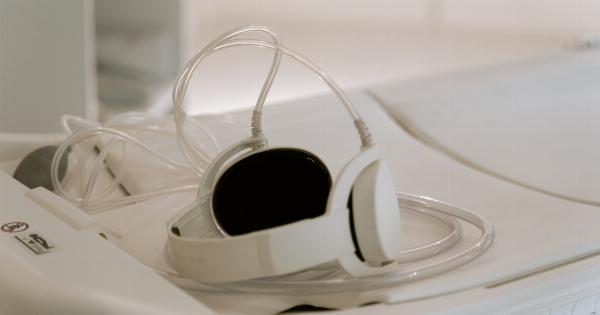Air pollution is a growing concern worldwide, affecting people of all ages and demographics. However, pregnant women are particularly vulnerable to the detrimental effects of air pollution.
Not only does it pose a risk to their own health, but it can also have severe consequences for the developing fetus. This article explores the various ways in which pregnant women are exposed to air pollution and the potential implications it has on their health and the health of their unborn child.
The Sources of Air Pollution
Air pollution arises from a multitude of sources, both natural and man-made. Some primary sources include:.
- Industrial Emissions: Pollutants released during industrial processes contribute significantly to air pollution. Harmful substances generated by factories, power plants, and refineries often contaminate the air.
- Vehicular Emissions: Cars, trucks, and motorcycles emit various pollutants, such as nitrogen oxides, particulate matter, and volatile organic compounds, which contribute to air pollution, especially in densely populated areas.
- Construction Activities: Construction sites release dust and pollutants into the air, primarily through excavation, demolition, and the use of heavy machinery.
- Agricultural Practices: The use of fertilizers and pesticides in agriculture can result in the release of harmful chemicals into the air. Additionally, the burning of agricultural waste generates pollutants.
- Natural Sources: Natural events like volcanic eruptions, wildfires, and dust storms can also contribute to air pollution, releasing significant amounts of particulate matter and harmful gases into the atmosphere.
Exposure Pathways for Pregnant Women
Pregnant women can be exposed to air pollution through various pathways. These include:.
Outdoor Air Pollution
Pregnant women living in urban areas are particularly susceptible to outdoor air pollution due to the high concentration of pollutants.
They inhale pollutants present in the air, including fine particulate matter (PM2.5), ozone, nitrogen dioxide (NO2), and sulfur dioxide (SO2). These pollutants penetrate the respiratory system and can enter the bloodstream, potentially harming both the mother and the developing fetus.
Additionally, pregnant women who live near busy roads or industrial areas are at a higher risk of exposure to harmful vehicular and industrial emissions.
Indoor Air Pollution
Indoor air pollution can also pose risks to pregnant women. Sources of indoor pollution include tobacco smoke, cooking and heating appliances, volatile organic compounds (VOCs) from cleaning products and paints, and inadequate ventilation.
Pregnant women spending a significant amount of time indoors, particularly in poorly ventilated spaces, may unknowingly expose themselves to high levels of indoor pollutants. This can increase the risk of various complications during pregnancy.
Health Effects on Pregnant Women
The exposure of pregnant women to air pollution can have several adverse health effects, including:.
Respiratory Issues
Prolonged exposure to air pollution can lead to respiratory problems in pregnant women. It may cause or exacerbate conditions such as asthma, bronchitis, and chronic obstructive pulmonary disease (COPD).
These respiratory issues can make pregnancy more challenging and increase the risk of complications.
Cardiovascular Problems
Air pollution has been linked to an increased risk of cardiovascular diseases in the general population, and pregnant women are no exception.
Exposure to pollutants can lead to high blood pressure, heart arrhythmias, and an increased risk of heart attacks and strokes during pregnancy.
Preterm Birth and Low Birth Weight
Pregnant women exposed to high levels of air pollution are at a greater risk of delivering prematurely and having babies with low birth weight.
Premature birth and low birth weight can increase the likelihood of various health issues for the newborn, including respiratory problems, developmental delays, and an increased susceptibility to infections.
Gestational Diabetes
Research suggests that pregnant women exposed to air pollution may have a higher risk of developing gestational diabetes.
This condition can complicate pregnancy and lead to other health problems for both the mother and the baby, including an increased risk of type 2 diabetes later in life.
Implications for the Unborn Child
The impact of air pollution on the unborn child can be profound and extend well beyond pregnancy. Some potential implications include:.
Developmental Issues
The developing fetus can be significantly affected by air pollutants. Exposure to pollutants during pregnancy can interfere with the normal development of organs, including the lungs, brain, and immune system.
This disruption can lead to long-term health problems and developmental delays in the child.
Neurological Effects
Studies have shown a correlation between prenatal exposure to air pollution and an increased risk of neurodevelopmental disorders, such as autism spectrum disorder (ASD) and attention deficit hyperactivity disorder (ADHD).
Air pollution can impair brain development, leading to cognitive and behavioral issues later in life.
Asthma and Allergies
Prenatal exposure to air pollution has been linked to an increased risk of asthma and allergies in children.
The developing immune system is particularly vulnerable to the effects of pollutants, which can trigger allergic reactions and asthma symptoms in early childhood.
Protecting Pregnant Women from Air Pollution
Reducing exposure to air pollution is crucial for the health and well-being of pregnant women and their unborn children. Some measures that can help protect pregnant women from air pollution include:.
- Indoor Air Quality: Ensuring proper ventilation, reducing the use of chemical cleaners and products, and avoiding smoking indoors can significantly improve indoor air quality.
- Avoiding High Pollution Areas: Pregnant women should try to minimize their time spent in areas with high pollution, such as near busy roads or industrial sites. If possible, they should consider relocating to areas with cleaner air.
- Using Protective Measures: Wearing masks and using air purifiers can help reduce exposure to outdoor and indoor pollutants.
- Regular Prenatal Care: Seeking regular prenatal care enables healthcare providers to monitor the health of pregnant women closely. They can provide guidance on mitigating the effects of air pollution and offer appropriate interventions if necessary.
- Supporting Clean Air Initiatives: Advocating for policies and practices aimed at reducing air pollution can have a long-lasting impact on the health of pregnant women and their future generations.
Conclusion
Pregnant women face unique risks and challenges when it comes to air pollution. From respiratory issues and cardiovascular problems to increased risks of preterm birth and developmental disorders, the potential consequences are alarming.
It is crucial to raise awareness about the adverse effects of air pollution on pregnant women and take proactive measures to reduce exposure. By prioritizing clean air initiatives and implementing protective measures, we can work towards ensuring a healthier, safer environment for pregnant women and their unborn children.





























